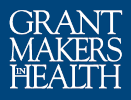Michael Tipton, President, BCBSLA Foundation
By the time this article is published, we’ll be marking several anniversaries of devastating natural disasters in Louisiana, all of which arrived late in summer. Hurricanes Katrina and Rita infamously decimated South Louisiana in 2005. Fifteen years later, in the span of just two consecutive summers, Hurricanes Laura, Delta, Zeta, and Ida battered a weary state still mired in the thick of COVID-19.
Mindful of hard lessons about how prolonged recovery can be lopsided and inequitable, exacerbating long-standing structural, racial, and economic disparities — we built our Foundation’s responses to COVID and the 2020/2021 disasters with an emphasis on doing whatever we could to see different outcomes this time around.
Since March 2020, our foundation has made more than $24 million in grants, with $15 million earmarked for disaster response. For some larger funders, this is a day in the office. For our foundation’s small, but mighty staff of just three-and-a-half (with, of course, some generous pitch-hitting support from corporate teams), this was an overwhelming feat. For reference, we normally make $3 to $4 million worth of grants annually.
And so, I’m writing today to share what we’ve learned over this intense period of growth and giving — both the high points that have become standard practices, and the low points from which we are still learning.
Where we succeeded, and what we learned from those successes:
- Response Time: Thanks to the leadership of our board, we were nimble in getting dollars out of the door as soon as possible. In many cases, our grant dollars were the first to hit the bank accounts of nonprofits scrambling to provide services to clients in the most need. We learned to balance strategic outcomes and the urgency of response; there simply wasn’t time to get stuck.
- Equitable Practices: Listening to our partners and watching best practices, there were certain things that were off the table: asking grantees to re-allocate previously award grant dollars to COVID or disaster response, denying additional awards to those who had already been funded, and restricting funds.We know that BIPOC-led and -centered organizations win fewer grant dollars and that they often come with the most strings. To ensure the survival of these life-saving organizations, we made our disaster grants in the form of general operating dollars. If you could demonstrate a need and a solution, we did not intend to hamper you with time-consuming restrictions. We also significantly lowered our reporting requirements, asking for only what we definitely needed. Based on feedback, we learned a lot about how effective this approach was.
- Considering New Vehicles for Relief: By facilitating conversations amongst funders, nonprofits, and officials, we stayed flexible and open to proposals we might not have considered before, including providing direct economic payments during COVID shutdowns. Because so many people are underemployed or in gig-based work, they were falling through the cracks of federal relief programs that otherwise excluded them. We are so grateful to grantee partners who saw these individuals and quickly moved to make sure they had dollars to support their families. We learned to broaden our field of view on what works to affect the social determinants of health.
Where we stumbled, and what we’re learning from those setbacks:
- Tone matters, even more so in a crisis. In the early days of cranking out grants, we weren’t as reassuring and empathetic as we could have been about those proposals we weren’t certain of. With an initial disbursement from our board of just $2 million, we deferred on long-term recovery programs initially to make sure we had enough in the hopper to meet all immediate needs (food, shelter, paying the light bill), understanding that it would take time for all of those applications to come in.We were doing the best we could to try and stretch our resources (while anticipating that more dollars would be allocated later), and when we simply notified some hard-working, vitally important services that they were waitlisted… well, let’s just say it didn’t go over well. We should have taken a little more time to fully explain how we were anticipating the next few months to play out.
- Fix your legacy systems now, so that they don’t hamper you in a crisis. Not having a modern, easy-to-navigate cloud-based system added a ton of unnecessary complication and work for our staff, for people applying for funds, and for reporting down the line. We had been considering replacing our giving platform for a number of years, but hadn’t acted quickly enough. And so, for other funders, I advise: do it when times are good. Push to upgrade even if there’s no urgency. The process is long and complicated, and when it is urgent, it will be too late. We were headlong into a transition in March of 2020, but it wouldn’t be completed until the end of the year.
- Have a business continuity or disaster response plan that addresses issues of capacity. We’ve responded to many disasters before, but never at this scale, pace, or rapid succession. Initially, we were overwhelmed. I credit our team for putting in the extremely long hours to get it done. And, eventually, we learned how, when, and where to pull the levers to add capacity to our team, to maintain work-life balance, and more. I think we navigated it as well as anyone but, we also acknowledge, we could have thought about this more and planned before the time of need came. I urge you to consider talking with other funders, nonprofits, your board, and other stakeholders about how to rapidly scale your organizational bandwidth, whether that’s through contractors, shared services in a time of crisis, or pro bono support.
We continue to adapt and learn. Thankfully, the pace of disaster giving has slowed for us. However, we are aware that we are once again entering the high season for potential crisis, and hopefully these lessons continue to serve us well. If we can be useful to any others in quickly shaping disaster-related giving, please let us know.

